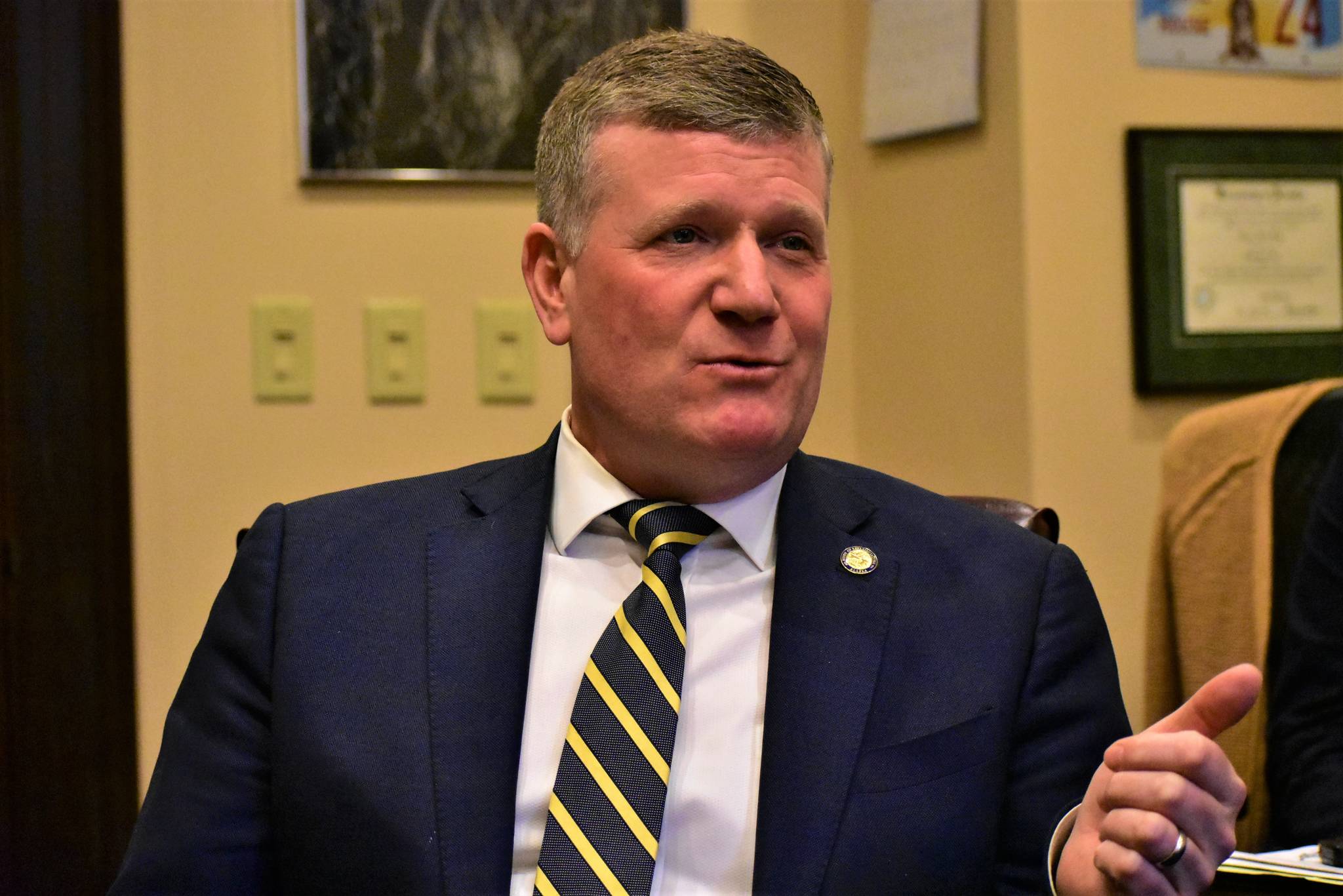Co-chairs of the House Rules committee Wednesday submitted a bill that would limit the amount the state could spend on the Permanent Fund Dividend.
House Bill 306, sponsored by Reps. Jennifer Johnston and Chuck Kopp, Anchorage Republicans who chair the Rules Committees, would split the annual draw from the earnings reserve account of the Permanent Fund between 80% for state services and 20% for PFDs.
“This bill is consistent with what organized the House, and we also believe it’s what Alaskan’s are crying out for us to do,” Kopp said in a press conference. “This is the principle the House organized around, not overdrawing the earnings reserve and paying a dividend we can afford.”
Kopp and Johnston both said this bill was meant to protect the future of the Permanent Fund by not drawing the ERA down and effectively ending the annual debate surrounding the size of the dividend.
“The dividend has hijacked a lot of our conversations here in Juneau for the last couple years,” Johnston said. “We need to get back to operating as a government and an operating body and to do that we need to address the dividend.”
Kopp said that under this bill, funds in the Constitutional Budget Reserve wouldn’t be drawn down to critical levels until 2029. Under Gov. Mike Dunleavy’s proposed budget which allocated funds for a PFD of $3,170, would have drawn the CBR down to $540 million.
Additionally HB 306 would create a Permanent Fund Dividend Task Force to review the impacts of the PFD. However, that task force wouldn’t be created until 2026 and would only exist for just under a year, enough time for it to complete its report.
Under the budget just passed by the House earlier this week, a 20% of the CBR draw would be approximately $900, according to members of Kopp’s staff.
That’s a bit low for some lawmakers who have traditionally supported a larger PFD.
“I think it’s kind of counterproductive,” said Rep. Lance Pruitt, R-Anchorage, “I think they’re gonna struggle to get it past, maybe they went so low so they can negotiate up to a 30-35 (percent split).”
Pruitt said if a bill with such a low PFD were to pass, there would most likely be a referendum in an attempt to repeal it. Any decrease to the PFD needs to be coupled with a spending cap, preferably in a constitutional amendment, he said.
“A lot of people will see the creep of the cost of government,” Pruitt said. “Just a few years ago (Gov. Bill) Walker was taking 50/50.”
Johnston and Kopp did acknowledge there was still work to be done, noting that other bills addressing the PFD were also in the works. The House Finance Committee, which Johnston is also co-chair of, will be considering those bills in the coming weeks, she said.
“We’ll be discussing the governor’s bill to pay back dividends,” Johnston said. “Hopefully we can create a picture and modeling of all of those bills so that we can land on the right statute going forward.”
“It’s the governor’s policy is to not comment on proposed legislation until it passes the legislature,” Dunleavy spokesperson Jeff Turner said in a statement. “That said the governor believes the people be involved in any change to the PFD program.”
But as the Legislature debates the future of the Permanent Fund and the dividend, the fund itself lost roughly $2.8 billion between Feb. 21 and 28 due to market sell-off driven by concern over COVID-19, also known as the coronavirus, according to a press release from the Alaska Permanent Fund Corporation.
Despite the massive sell-off the market has recovered some and as of March 3, the fund was up $496 million, according to APFC spokesperson Paulyn Swanson.
• Contact reporter Peter Segall at 523-2228 or psegall@juneauempire.com.

